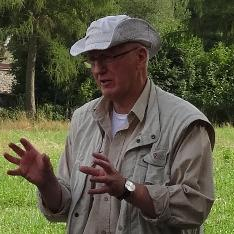Mineral Deposits of the Balkan Peninsula and Western Turkey
A special issue of Minerals (ISSN 2075-163X). This special issue belongs to the section "Mineral Deposits".
Deadline for manuscript submissions: closed (31 August 2021) | Viewed by 10753
Special Issue Editors
Interests: economic geology; technical mineralogy; applied sedimentology-geomorphology; archeo-metallurgy; pegmatites; placers; clay minerals; supergene alteration; actuo-geology; ore geology strategic elements
Special Issues, Collections and Topics in MDPI journals
Interests: mineralogy; ore deposits; geochemistry; Raman and infrared spectroscopy; igneous petrology
Special Issues, Collections and Topics in MDPI journals
Special Issue Information
Dear Colleagues,
The mineral deposits of the Balkan Peninsula and western Turkey are bound to modern fold belts such as the Carpathians, Dinarides, Balkanides, Hellenides, and Pontides separated by large intermountain basins, e.g., the Pannonian Basin and bordering small basement structures such as the Dobrudja Zone. In view of the vast outcrops of Mesozoic and Cenozoic rocks, unsurprisingly, the majority of mineral deposits are found in Cretaceous, Paleogene, and Neogene rocks. This SE European mineral province is known for its porphyry-type and epithermal silver and gold deposits, e.g., Rosia Montana, Romania, Bor, Serbia, Chelopech, Bulgaria, and Kisladag, Turkey. The metallogenic districts are also host to Pb-Cu-Zn deposits. Additionally, Fe-Mn- and bauxite deposits are still mined. This Special Issue is open for new ideas and models created for these classical ore deposits. First and foremost it will be a forum for research on mineral deposits irrespective of their economic importance as a deposit under exploitation for quite a long period of time or as a newly discovered site in the state of a mining project, such as the lithium-boron mineralization in the Jadar Basin, Serbia. Even if some of the non-metallic mineral assemblages in sedimentary and igneous host rocks have not yet come under the spotlight of mining engineers and entrepreneurs they may be suitable targets for new genetic models and element concentrations hitherto not known from such lithologies. The following keywords should give an idea of the topics of interest for this Special Issue in view of the current and future technologies is given below:
- Clay minerals,
- Sand and placers,
- REE-U-Th mineralization,
- Nb-Ta- Ge-In-Ga-Se concentrations,
- PGE mineralization.
Unconventional resources in uncommon environments should be the central theme of this volume. New ideas may be presented as a review or a research paper.
Prof. Dr. Harald G. Dill
Prof. Dr. Andrei Buzatu
Guest Editors
Manuscript Submission Information
Manuscripts should be submitted online at www.mdpi.com by registering and logging in to this website. Once you are registered, click here to go to the submission form. Manuscripts can be submitted until the deadline. All submissions that pass pre-check are peer-reviewed. Accepted papers will be published continuously in the journal (as soon as accepted) and will be listed together on the special issue website. Research articles, review articles as well as short communications are invited. For planned papers, a title and short abstract (about 100 words) can be sent to the Editorial Office for announcement on this website.
Submitted manuscripts should not have been published previously, nor be under consideration for publication elsewhere (except conference proceedings papers). All manuscripts are thoroughly refereed through a single-blind peer-review process. A guide for authors and other relevant information for submission of manuscripts is available on the Instructions for Authors page. Minerals is an international peer-reviewed open access monthly journal published by MDPI.
Please visit the Instructions for Authors page before submitting a manuscript. The Article Processing Charge (APC) for publication in this open access journal is 2400 CHF (Swiss Francs). Submitted papers should be well formatted and use good English. Authors may use MDPI's English editing service prior to publication or during author revisions.
Keywords
- Modern fold belts
- Classical ore deposits
- Industrial minerals
- High-tech metals
- Unconventional mineral resources
- Uncommon depositional environments
Benefits of Publishing in a Special Issue
- Ease of navigation: Grouping papers by topic helps scholars navigate broad scope journals more efficiently.
- Greater discoverability: Special Issues support the reach and impact of scientific research. Articles in Special Issues are more discoverable and cited more frequently.
- Expansion of research network: Special Issues facilitate connections among authors, fostering scientific collaborations.
- External promotion: Articles in Special Issues are often promoted through the journal's social media, increasing their visibility.
- e-Book format: Special Issues with more than 10 articles can be published as dedicated e-books, ensuring wide and rapid dissemination.
Further information on MDPI's Special Issue polices can be found here.






